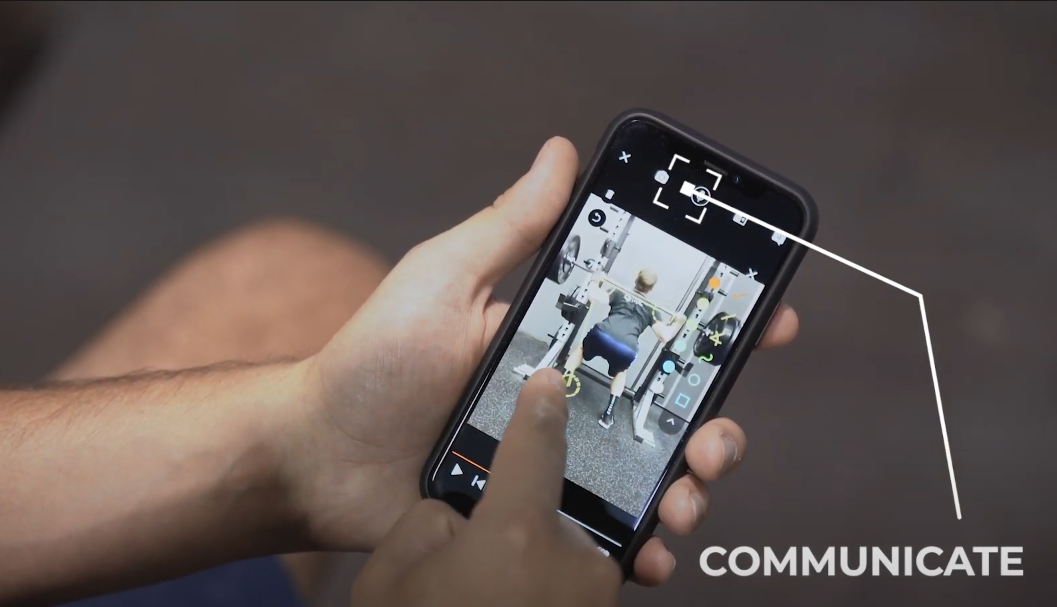However, all too often I see coaches going down an endless video analysis rabbit hole, completely losing sight of its potential and creating unnecessary work for themselves that goes unused or unappreciated.
In other words, coaches are often "missing the forest for the trees," when it comes to video analysis.
With that said, my objective here is to help you understand best practices when it comes to video analysis. I hope the advice here helps you save time and leverage modern technology to help your athletes reach their goals efficiently.
Let's get down to it.
Analysis, when done well, accomplishes 3 key things:
1. Empowers athletes to know what they're doing well and what they can improve.
This is the most obvious benefit – we are much better judges of ourselves when we can see what we are doing. (ie. FEEL vs REAL)
When you are doing an activity, it's difficult to notice micro movements/mistakes because your mind is focused on a holistic goal. But, truth is, long-term technical progress happens when many small changes aggregate over time. To that end, video analysis tools offer a clear way to communicate potential areas where the athlete can improve their form.
On the flipside, video analysis helps highlight what the athlete is doing right.
When giving feedback, be sure to include a mix of praise and constructive feedback. Pointing out successes immediately will help your athlete "lock in" their progress, and videos serve as a great reminder of what to do when practicing alone.
Often, it is hard to understand cues from a coach if they are only communicated verbally.
Talking through video footage (aka: voiceover) together puts you both on the same page and improves communication. The video tools in CoachNow make it easy to illustrate feedback and gives you more power to learn from footage together while working asynchronously.
Additionally, the process of recording requires cognitive effort on the part of the athlete. Taking a video of oneself requires a level of vulnerability and naturally puts people in a mindset where they try to improve during the act of recording itself.
E.g. "I gotta get the best possible shot before I post because my coach will see it!"
This shared understanding and vulnerability reinforces the mentor-mentee relationship and teaches the athlete to analyze their own behavior and take your feedback into account when engaged in their improvement plan.
By our nature, people are driven by a narrative of progress, and video analysis gives your athletes the context they need to see their own improvement over time.
It is a lot easierfor athletesto stay motivated and be consistent with their training plan when they see they are moving closer to their goal (even if it feels slow in the moment!). The objective, third-person perspective you get from video analysis can do wonders for your client's confidence and, by extension, lead to better retention.
To that end, you should make it a habit to reference past videos so the athlete doesn't forget about their own progression. Having these records is only as useful as you make it, and I encourage you to reference past footage when your athletes develop good habits and buck bad ones.
If it doesn't, it's a waste of time.
Full stop.
Many coaches are surprised at the hard line I take here, but in my experience the most successful application of video is one that keeps things as simple as possible.
My advice here is simple: it doesn't help your athletes if you break down technique in an overly complicated way.
In the next blog, I dive deep into the 3 common mistakes I see coaches make when utilizing video in their programs. You can see that post at this link.
Before continuing, I want you to think about the following questions:
How do you use video analysis in your coaching? Is it an integral part of your offer? If not, how can you utilize the tools of CoachNow to deliver additional value through video analysis?
Talk soon.
P.S. Like this content? Hate this content? Think we’re missing a topic in our growing content library? Submit any and all feedback at this link. We read every submission – don’t be shy!
P.P.S. Still not a member of CoachNow PRO? Click here to sign up for a free 7 day trial and receive 15% off your first year. Hundreds of coaches are raving about PRO - we’d love to have you on board!
